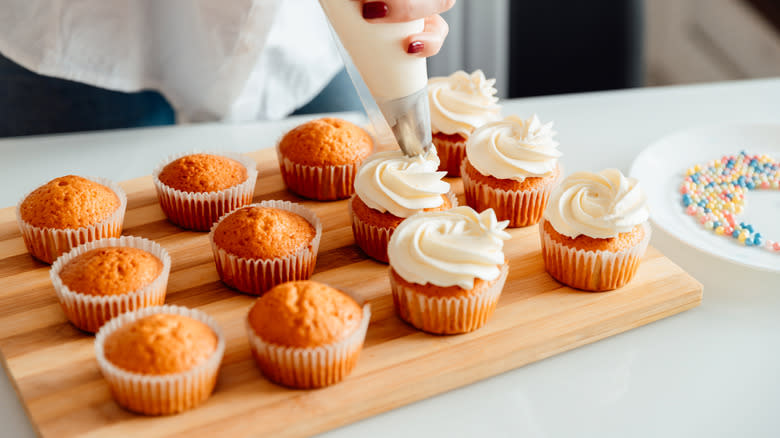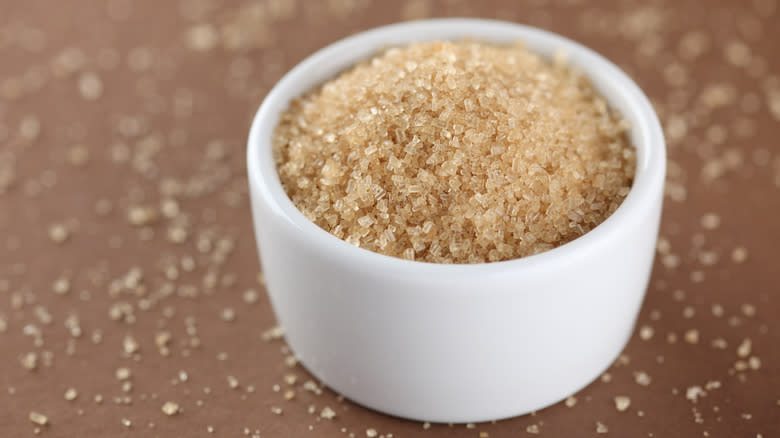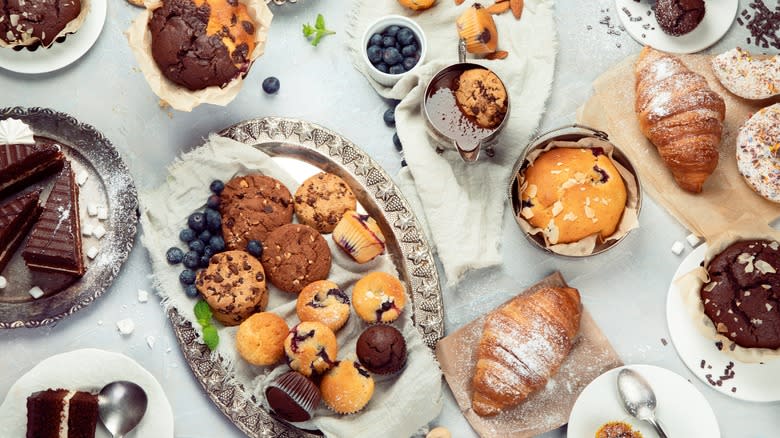Make Your Canned Frosting Way Better With This Toasty Tip

Homemade frosting is easy enough to whip up at home, but sometimes a can of premade hits just right. It's convenient, keeps for a long time in the fridge, and saves you from busting out a mixer. As for the taste, however, store-bought frosting can be cloyingly sweet, which can overpower the baked goods you (presumably) went through the trouble of making from scratch. Luckily, the road to upgrading canned frosting is peppered with all sorts of hacks. One of our favorites? Try mixing in toasted sugar to add complexity and tame that sickly sweet flavor.
While it might sound counterintuitive to add sugar to something that's already overly sweet, toasted granulated sugar brings a whole new flavor profile to the table. As it spends time in the oven on low heat, it deepens in color and flavor, taking on warm, nutty, subtly caramelized notes.
What's more? That low and slow toasting process draws out much of the sugar's complex molecules, replacing them with simple molecules that are easier on the digestive system. So in addition to curbing the sweetness of store-bought frosting, toasted sugar might allow you to eat more frosted baked goods without getting a stomach ache. We'd call that a win-win.
Read more: Cake Hacks Every Baker Will Wish They Knew Sooner
How To Make Toasted Sugar

When you toast a pan of granulated sugar in a low-heat oven, between 300 and 325 degrees Fahrenheit, for anywhere from one to four hours, your kitchen might start to smell like the inside of a Werther's. And while caramelization is indeed taking place as your sugar turns from white to golden brown in a process called thermal decomposition, toasted sugar isn't the same as the sticky, drizzleable condiment you know and love.
The latter is made over high heat, which yields a characteristic you don't want in your toasted sugar (or your frosting): bitterness. While traditional caramel has a place in countless bold desserts (caramel whipped cream, anyone?), toasted sugar is meant to balance, not overpower, the flavor of sweets. Simply swap it out for regular sugar using a one-to-one ratio.
If you're put off by the idea of waiting by the stove for several hours, rest assured that toasted white sugar will take on sweetness-tempering properties in as little as an hour. You might not get those more complex notes in so little time, but you'll have something to take the edge off your frosting. To make things even easier on yourself, make a batch of toasted sugar ahead of time. Once your sugar has cooled and you've sifted out any clumps, store it in an airtight container. It will keep for up to a year, which is as long as untoasted granulated sugar lasts in your pantry.
Frosting And Beyond

Beyond frosting, toasted sugar works wonders in all manner of baked goods that normally call for untoasted sugar, from meringues and delicate cakes to cookies and pie crusts. If you like the subtle nutty flavor of toasted sugar as much as you like its toned-down sweetness, use it in your next batch of brown butter chocolate chip cookies. The almost toffee-like notes of the brown butter will play beautifully with the caramel-y toasted sugar, begetting a decidedly sophisticated cookie without much effort.
Meanwhile, fluffy Swiss meringue is another perfect application for toasted sugar, whether you're making pavlova or dainty cookies. In addition to its lovely depth of flavor, some say toasted sugar dissolves more easily into egg whites (the only other ingredient in meringue) than untoasted sugar. Whatever dessert you have in store, reach for toasted sugar anytime you want to cut back on sweetness without compromising flavor.
Read the original article on Daily Meal

